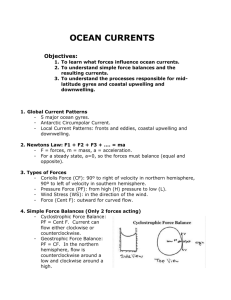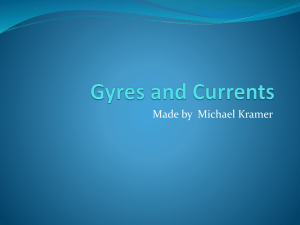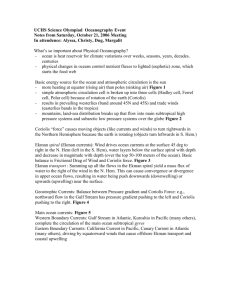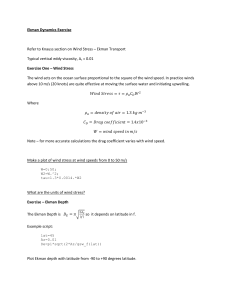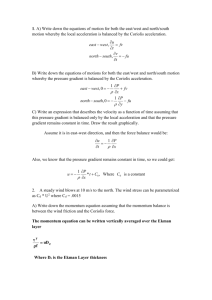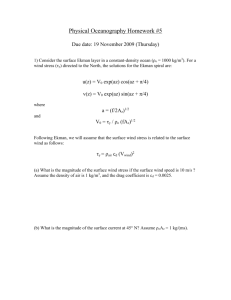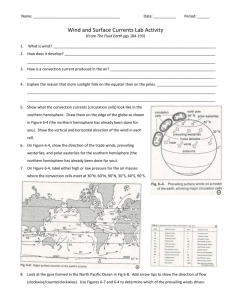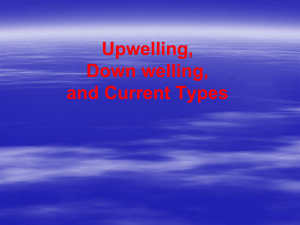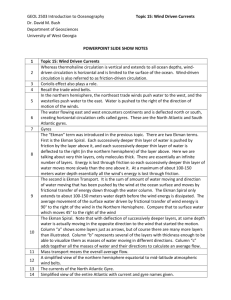Transfer of Wind Energy to Water
advertisement
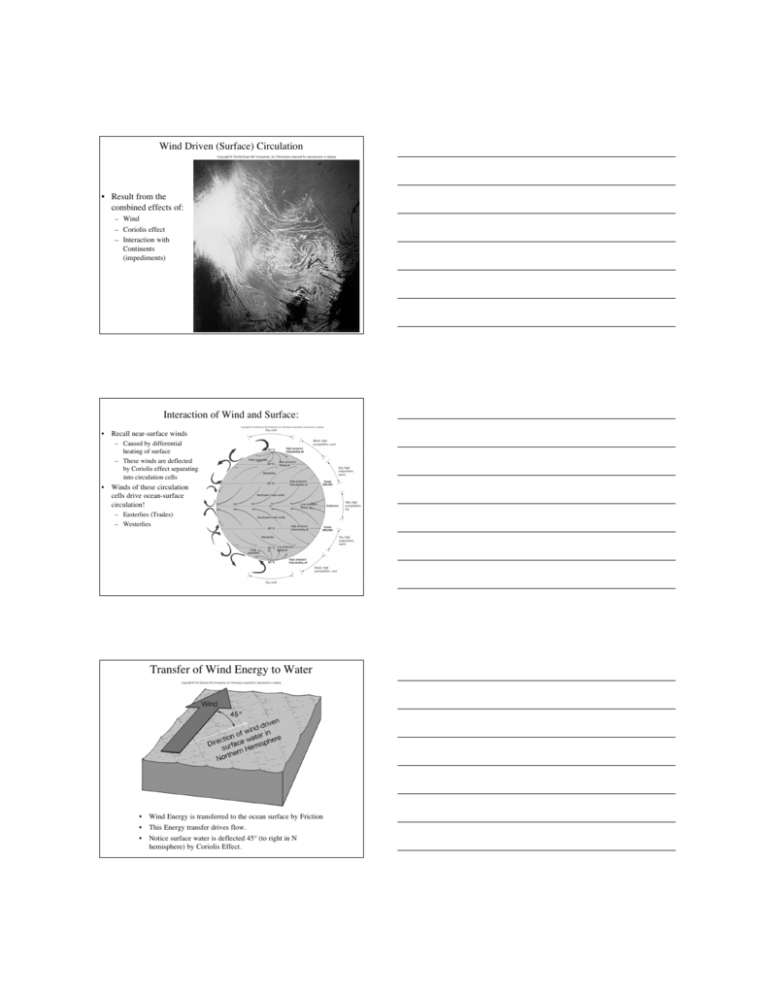
Wind Driven (Surface) Circulation • Result from the combined effects of: – Wind – Coriolis effect – Interaction with Continents (impediments) Interaction of Wind and Surface: • Recall near-surface winds – Caused by differential heating of surface – These winds are deflected by Coriolis effect separating into circulation cells • Winds of these circulation cells drive ocean-surface circulation! – Easterlies (Trades) – Westerlies Transfer of Wind Energy to Water • Wind Energy is transferred to the ocean surface by Friction • • This Energy transfer drives flow. Notice surface water is deflected 45º (to right in N hemisphere) by Coriolis Effect. The transfer of wind energy changes with Depth • As surface current flows (45º from wind) – Shears layer below – Lower layers flow, but also deflected by Coriolis – Flow in lower layers diminishes because of inefficient energy transfer – This produces the Ekman Spiral. Ends at ~100 m depth (no wind energy transferred below this depth) • Ekman Spiral results from: • NET FLOW = Ekman FLOW – Coriolis – Inefficient E transfer w/Depth – 90º to wind direction! – Note Surface Current ≠ Ekman Flow What surface currents will result (in N. Hemisphere)? A. Westward flow in tropics, and eastward flow in midlatitudes (30º-60º) B. Eastward flow in tropics, and westward flow in midlatitudes (30º-60º) C. Northward flow in tropics, and southern flow in midlatitudes (30º-60º) Let’s draw together Resulting surface flow pattern • • • N-easterly Trades and Westerlies result in Ekman flow toward ‘center’ This will continue across ocean until continents deflect flow. Results in a Gyre or spiral flow Result of surface flow pattern • Elevated convergence! – See how water is pilling up in the center of the Gyre? • This creates a gravity imbalance… Development of Geostropic Gyre • Balancing Ekman Flow and gravity flow produces a Geostropic Gyre – Pressure or gravity flow from elevated convergence (down hill flow) – Surface & Ekman flow toward the center (against gravity/pressure gradient) • • • Resulting flow direction - balancing Ekman Flow and gravity flow results in a gyre or flow around an elevated convergence, Speed of these Geostropic Currents are 1/100 th of wind speed (~1 to 0.5 m/s) Size: the scale of an ocean basin: Easterlies drive surface flow to west, Westerlies drive surface flow to the east. Continents deflect flow N or S. Example of Geostropic Gyre North Atlantic Elevated Convergence Earth’s 7 major surface currents • North Atlantic Gyre, South Atlantic Gyre, North Pacific Gyre, South Pacific Gyre, Indian Ocean Gyre, Arctic Gyre and Antarctic Circumpolar Current Why is Antarctic Circumpolar Current not a Gyre? A. B. C. D. E. Because there are no easterly winds at high latitude Because there is no Coriolis effect at high latitude. Because there is no continent to deflect the current None of the above I am not in class Arctic Gyre (7th current) Animation of Surface currents Note flow in and out is primarily through North Atlantic Western Boundary Currents: • Caused by – Strong Easterlies at low latitude – Deflection of surface flow by continents – Increasing Coriolis effect with latitude • Examples – Kuroshio & Brazil – And… Gulf Stream • Largest of all • 55 x 10 6 m3/s • Equal to 300 x Amazon flow Review Questions • • • • How does Coriolis Effect produce Ekman Flow? Explain the Ekman Spiral. How does Ekman Flow produce an elevated convergence? How does an Elevated convergence become a geostropic gyre? • Why do ocean basins have western boundary currents? • Why are western boundary currents important to society?
